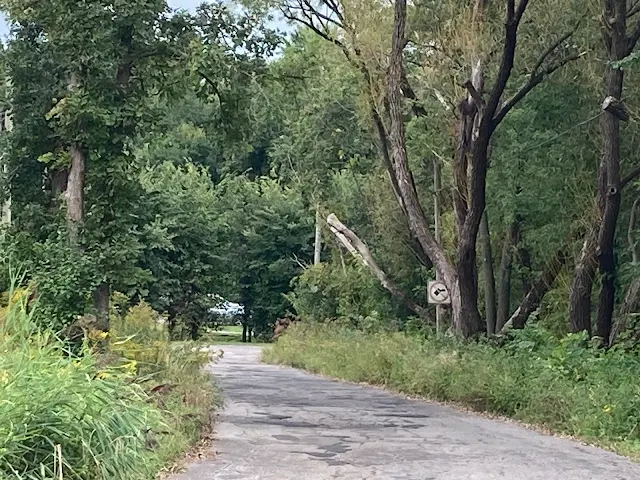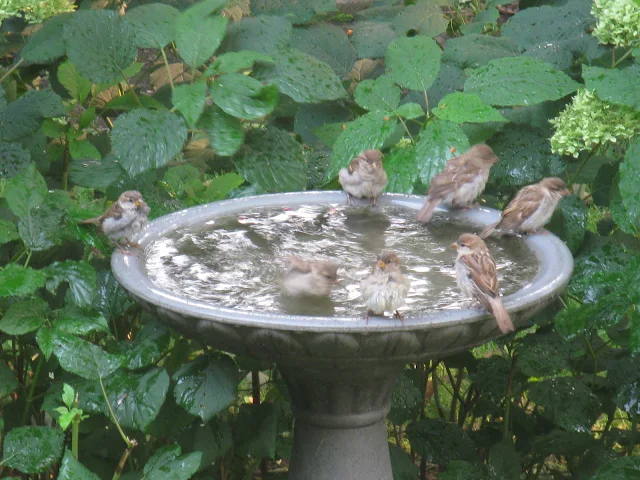This review of The Green
Archetypal Field of Poetry: On Poetry, Poets, and Psyche by Michael
Greenstein, was published in The Dalhousie Review, fall 2023.
--------------------------------------------
Stephen Morrissey, The
Green Archetypal Field of Poetry: On Poetry, Poets, and Psyche.
Victoria: Ekstasis,
2022, 141 pages, $24.95, ISBN 9781771714723
The cover of Stephen Morrissey’s The Green Archetypal Field of Poetry displays half of an
old-fashioned typewriter, as if to suggest that this book represents half of a
book that should be read in conjunction with the author’s earlier volume, A Poet’s Journey (also published by
Ekstasis). Nevertheless, this volume is not only interesting and informative,
but also quietly impassioned in its autobiographical insights.
The
book begins with two epigraphs addressed to the Muses—one from Bob Dylan, the
other from William Blake. Dylan’s “Mother of Muses” (2020) contains the line
“Forge my identity from the inside out,” while Blake’s “To the Muses” (1783)
ends with “The sound is forc’d, the notes are few!” Morrissey’s Muses navigate
between forging identity and forcing sound; his green archetypal field forges
ahead and gains force with each entry on poetry and psyche. Two additional
epigraphs show other influences. Keats’ statement in a letter of 1818 to John
Taylor demonstrates a Romantic strain in Morrissey’s poetry and poetics: “That
if poetry comes not as naturally as leaves to a tree it had better not come at
all.” Allen Ginsberg’s advice, reported in the Montreal Star in 1967, also
makes its way into Morrissey’s modernist thinking: “Scribble down your
nakedness. Be prepared to stand naked because most often it is this nakedness
of the soul that the reader finds most interesting.” Through Dylan, Blake,
Keats, and Ginsberg, Morrissey bares his soul, as Keats’ leaves enter
Montreal’s fields.
Indeed,
most of these brief entries and essays were first published between 2008 and
2021 in Morrissey’s blog, Made in Montreal. The first entry, “Poetry Is a
Calling,” shows the importance of vocation, avocation, and invocation. Part of
the poetic calling may involve collage or the cut-up technique, which is in
evidence in the structure of this book. The nine sections of “Beginning with
Allen Ginsberg” reveal one form of the cut-up technique that ends with
Ginsberg’s words, “scribble down your nakedness.” This soul baring and bearing
runs throughout Morrissey’s memories, as he moves to Keats’ symbolism of trees
and Hades: “For poets to mature it is necessary to visit the Underworld, as
Persephone did; this is a journey into darkness and, if the poet has the
courage, it is also a place of great creativity, of revealing what has been
hidden or disguised.” Morrissey journeys through the darkness of his own soul,
and he also journeys across Montreal to illuminate some of the city’s hidden
poetry; both the ground and the sky inform his archetypal imagination.
When he
compares archetypes to the patterns iron filings make in a piece of glass when
a magnet is place under the glass, we can see the connection between archetypes
and the cut-up technique that is also part of the poet’s craft. William
Burroughs is his source for this technique, which he applies to A. M. Klein’s
poem, “The Mountain.” Cut-up involves coincidence, flashes of insight that
produce metaphor, visual collages, randomness, jesting, and avoiding the
imposition of the ego. (When Morrissey compares his own poem, “Heirloom,” to
Klein’s “Heirloom,” he reveals his own self-effacement: “It was almost an
embarrassment after reading Klein’s.”) In an “Addendum” at the end of the book
he presents his version of “The Mountain,” which is significant not only for
its cut-up but also for introducing Montreal and its poetry, which fills most
of the book.
Included
in his list of Montreal poets are Irving Layton, John Glassco, Frank Scott, A.
J. M. Smith, Louis Dudek, and Leo Kennedy. Morrissey gives us a sense of place
and poetry with these Montreal poets, and a certain nostalgia lingers for those
old days when he was mentored by Dudek at McGill. A younger generation of poets
starts out from the Véhicule Art Gallery; these poets include Artie Gold, Ken
Norris, and Endre Farkas, and their portraits around Sir George Williams
University are as interesting as those of the earlier generation.
Morrissey’s
collage journeys between autobiographical details and universal truths. He
describes his grandmother’s home at 2226 Girouard Avenue, which is his psychic
centre, and contrasts it with soulless cities in a globalized world. He then
shifts to poets, like Dante, who were sent into exile: “Travel, exile,
pilgrimage, the desire to return home, all can be found in Homer, Chaucer, and
Dante.” His discussions of the archetypal home show the influence of Jungian
psychology on his personal and poetic development in a quest-collage.
In the
final section of the book, “Psyche,” we learn about shamanism. Having mentioned
his two wives earlier in the book, he now recounts a woodcut given to him by
his brother—“a shaman on the back of a grizzly.” The shaman is almost as big as
the bear, “head turned so he stares directly at the viewer with an expression
of surprise on his face, the shaman and the bear appearing from some unknown
place, and always in the continuum of Inner Space.” He interprets the woodcut as
an archetype for rebirth after the bear’s hibernation in a cave, a sign of the
ursine cycle.
This
hypnagogic, shamanic experience gives rise to one of Morrissey’s poems: “a
shaman on the back of a grizzly / the black fur a black streak / moving between
the trees / then across an open grassy field.” The entire poem avoids
punctuation in order to give a sense of the fluid motion between the
grizzly/shaman and the observer, as well as the merging identities of all
spectators. The black streak in the landscape contrasts with the white teeth
later in the poem, just as the open field yields to the open mouth: “we see the
white of his teeth / we see the shaman mouth open / we see him see us / we see
them disappear back into the forest / they see us disappear back into the
forest / we see him see us.” The final six parallelisms reinforce the streaking
disappearance, the back of the grizzly doubles back to “back into the forest,”
and the pronouns fuse the hypnagogic effect of our experience of
shaman/grizzly. Like the archetypal cave, the mouth’s cavity and the mystery of
the hidden forest engulf all of our psyches. From green archetypal field to the
mysterious forest, the poet conveys the liminality and fugue states of nature
and mankind.
From
this woodcut, the cut in the woods, and the cut-up technique, he returns to
Girouard Avenue with its old claw foot bathtub and its subliminal connection to
the grizzly’s claws that tug at memory and experience. This ancestral home
arrives at an understanding of the quiet zone of old age, as Morrissey’s voice
turns wistful and elegiac, especially when he recalls his father’s death, which
signalled the “Great Reconfiguration” in his life. He sees faces in clouds
(“pareidolia”) and invokes Rimbaud’s voyant, Rilke’s angel, and Lorca’s duende.
He is in good company, as The Green
Archetypal Field of Poetry establishes its own duende out of mountain,
heirloom, and modernism.
—Michael
Greenstein




















.jpg)









.JPG)
.JPG)
.JPG)















